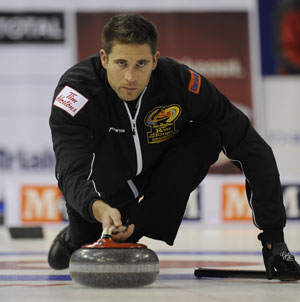Fit to Curl: Taking a break. And how to get back at it.
I imagine I’m like a lot of people who work hard at the game throughout a curling season. By the time May rolls around, I’m ready for a break.
Even if you don’t have a schedule that keeps you curling through the end of April, I still think it’s important to take a breather once the ice goes out, the shoes get tucked away and the brooms are stored. For me, that means not only getting away from curling but also taking a few weeks to put my physical training on the back burner.
Don’t get me wrong — it’s not like I suddenly start eating wings for dinner every night and spending all my time on the couch watching reality TV shows. I’m an active person who loves being in the outdoors — I like to use this time to make some of my favorite hobbies a priority. That means doing some quality fishing and hunting and maybe spraying some drives in a few golf outings. And even though I’m not focused on conditioning, I’ll still do some things to maintain my cardiovascular levels.
The mental break from serious physical conditioning is important. I also believe that after a long season on the ice and in the gym, my body appreciates a few weeks of rest and recovery.
But, of course, you can’t hit the Pause button for too long. Eventually, if you’re serious about being as strong and fit as possible on the ice next season, you have to get back to training.
It can be discouraging to discover that, after just a few weeks without a dedicated regimen, your fitness levels have dropped. My first time back at the gym after a break, I find myself struggling to complete the each set with the same amount of weight that I was using before. And when I push myself in a cardio workout, I realize that as much as I love a day on the water with a rod in my hand, fishing really doesn’t do a whole lot to keep someone in shape.
On the plus side, discovering that my overall fitness is down reminds me that working out makes a real difference in how I feel and how much I can push myself on the ice. I also realize that I need to get back into training in way that makes sense. I can’t shake off the rust with just one workout.
I have to accept that I can’t immediately return to the levels I was at during my peak training periods. If I’m doing cardio interval training, I’ll increase the amount of low-intensity recovery time between my high-intensity bursts. When I’m doing certain strength training exercises in the gym, I reduce the amount of weight I was using previously but still aim to complete the same number of repetitions. I’ll make sure I commit enough time to flexibility training at the end of a session in order to reduce muscle soreness as much as possible. (“As much as possible” is the harsh reality — you just can’t expect to return to exercise without your muscles barking.)
One of the biggest things to remember when getting back into the swing of things at the gym is to gradually progress your workload. You really don’t want to overdo it during your first week back, as an injury at this stage would be a significant setback for your offseason training goals. What’s most important is to establish a consistent routine and stick with it. It’s better to have less strenuous sessions than miss a day in your weekly routine. Scale back the amount of weight from your previous highs, shave a few minutes off a cardio workout, but don’t skip a workout altogether.
Don’t worry. No matter how hard it might seem during that first week or two, your overall level of fitness can return as quickly as it dropped. Before long, you’ll be back to where you were before and ready to start training hard, using the off-season to achieve important gains in strength and overall conditioning.
NEXT ENTRY: Maximizing strength building during the off-season.





